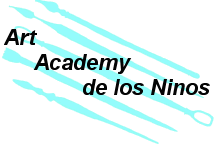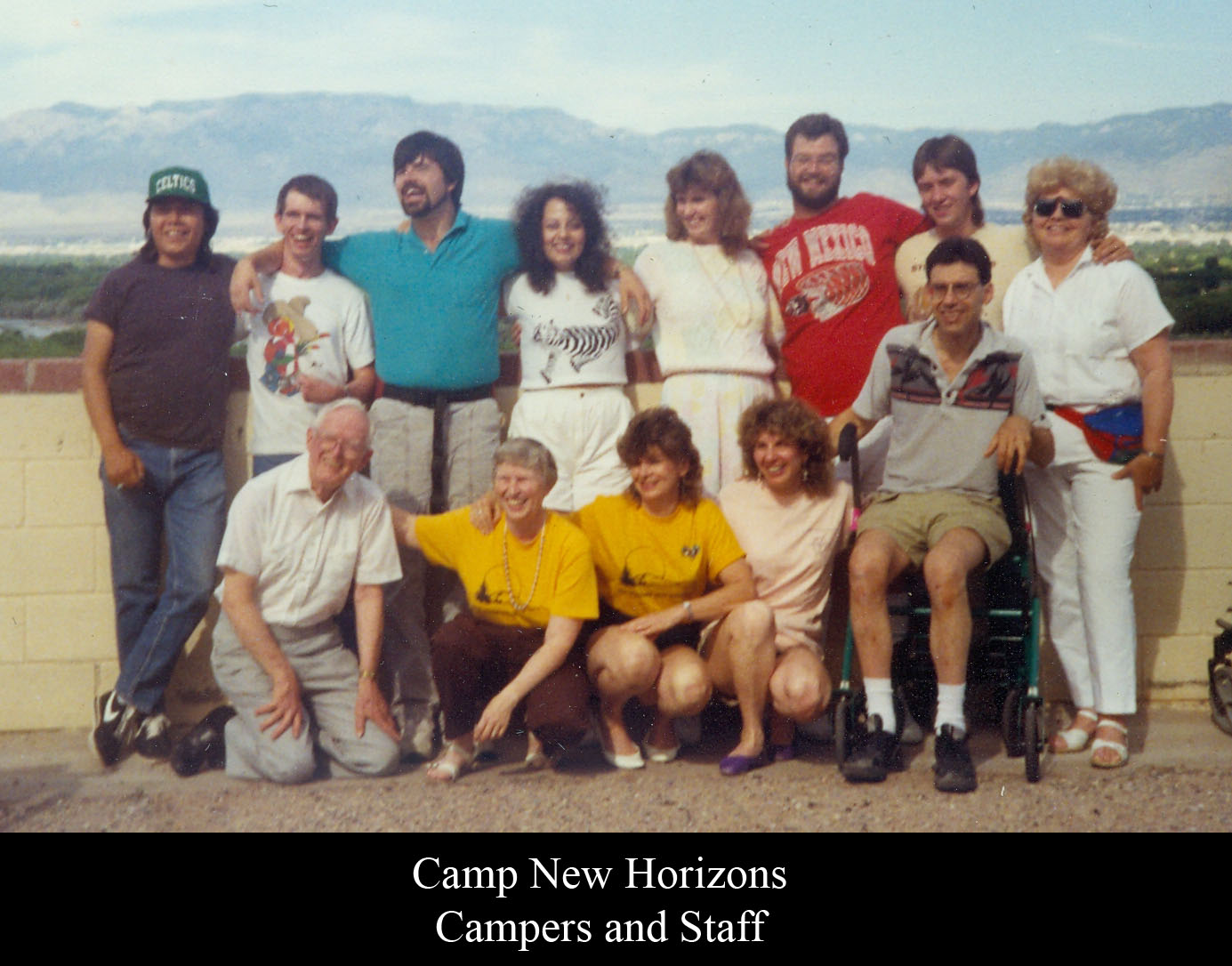Art Therapy by Sandi Wright, M.Ed., M.A.T. |
||||||||
|
|
||||||||
|
The Case for Art Therapy in Treating Returning Veterans with Traumatic Brain Injury |
||||||||
|
I would have to describe a magnificent day as one where I walk into a place of business and see one of my former head injured clients busy at work. When head injury happens, it is horrific, but with modern day therapies, hard work with encouragement and support, the victim can once again experience a productive, healthy, and happy life. The percentage of recovery, of course, depends on the age of the patient at the time of the accident and the amount of damage. Younger clients not only heal faster, but regain more cognitive and memory skills and are better able to maximize their functions and limit their disabilities. I have seen, over my 21 years of therapy work, head injury resulting from motorcycles, horses, electrocution, auto accidents, drive by shooting, falls, and wars. No one is invincible or protected from head injury. It can happen in the blink of an eye. What is often most traumatic is the loss of the personality of the individual with the families and loved ones having to deal with the new person inside the familiar body. A lifetime interest in working with head injuries started when I had two victims of brain injury appear the first day of school in her classroom in wheelchairs. The girl and the boy seated, who had been head injured during the summer recess, were two of my former students at the high school where I taught. There were no instructions, no hired aides, and no help on how to deal with the handicaps each child presented. It was serendipitous that at about the same time a friend came to visit me from New York who was a brain-injured survivor. Together we invented tools to modify the wheelchairs so that the two students could have more control over their environment and steady their tremulous hands with Velcro straps taped to their wrists when writing or drawing. Even other students became involved and one carved arm rests out of wood in his wood working shop class to support the dominate arm of one “handicapable”, as I like to call them. Another student who had a class in consumer science sewed an arm sling for the other disabled classmate. I then learned of another former student who had been hit by a drunk driver while attending college. That made three youth in the community who were young victims of TBI (Traumatic Brain Injury). What was to become to them? What future did they have? What social life could they enjoy? I saw their friends disappear as the new personality of their once buddy was too different and strange to accept. It was then that my friend, Barbara Newborn, and I started looking into the possibility of starting a camp for head injured kids for opportunities for social interaction, physical activity, and healing. After all, if there was a real need for such a camp in one town, there would be other TBI’s who could attend and have a fun, productive, and enriching summer instead of sitting in front of the television every day. There are camps for other kinds of afflictions, why not head trauma? Partially funded by the local United Way, Methodist Church, and a wonderful group of volunteers this dream came true and in the summer of 1987. Camp New Horizons, first of its kind in the nation, got its start with four campers. The following summer the camp was headquartered at the College of Santa Fe campus in Albuquerque. In the following summers, the numbers grew to 27 campers from around the state of New Mexico. |
||||||||
|
|
An article in the Los Alamos Monitor referred to the camp as, “The Sun rises on Camp New Horizons, the little camp of miracles” and they quoted me as saying, “There is so much encouragement, enthusiasm and positive thinking present at Camp. The climate is perfect for miracles and healing that lasts long after the last camp goodbye.”
|
|||||||
|
I continued my teaching career but meanwhile earned my Master’s Degree in Art Therapy from University of New Mexico with a specialty in brain injury. I also was awarded a scholarship to study at the Whole Brain Institute in North Carolina where I studied specific brain injuries, and the varying debilitating results. Now there is a drastic need for therapy for our returning veterans as they fall victim to head injuries from IED’s (Improvised Explosive Devices). Helmets cannot protect our soldiers from the many blast injuries that are a growing cause of TBI in combat. I have been documenting improvements I have experienced in the use of art therapy in my practice with head injured veterans. All situations need assessment for individual needs, but most TBI’s have similar challenges with a common goal to rehabilitate and reenter society. This rehabilitation includes maximizing mobility function, decreasing or eliminating TBI-related disability including; memory, relearning basic life skills, clearer speech, emotional and stress management, increased comprehension, more independence from others, and to get on with their lives. I have seen improvements with my head injured clients. The confidence they gain in the creative process and in their assessment of their work helps in the healing of all of these limitations and adds joy to their lives. The intrinsic value of how Art Therapy works with our head injured veterans and other clients is on a conscious and unconscious level. An image can tap into a multitude of emotions, memories, and sensations. Rather the client is creating a painting, sculpture, pottery on the wheel, poem, short story, drawing, book, sand tray image, collage, or song, the process of creating and healing becomes multidimensional. One of the greatest assets to the fulfillment of their lives is the ability to have some control over their world, if only in an image or in the creative process. This is something, among others, that they have lost and now desperately need for that feeling of empowerment. |
||||||||
|
|
One of the levels of therapeutic value is to help increase and strengthen eye hand coordination through artwork production, no matter the media. In clay construction, the clay needs to be wedged (kneaded) to prepare the clay. This is a vigorous process of squeezing, pounding, and slapping the clay, thus strengthening the hands, fingers, wrists, and arms. The plastic clay used for sculpture or domestic construction is easy to transform. If a mistake is made, it is easily reshaped in this pliable medium. Clients use this to their advantage to create an image of darkness in their experience and then smash it to create a lighter structure. The emotional release is cathartic.
|
|||||||
|
Another value in this art therapeutic process is the ability of the client to dialogue with their image/creation. With counselor-guided encouragement in communicating, the client is able to express anger, sorrow, regret and a myriad of emotions with the result of getting the expression out of the body/mind, be it positive or negative. This process not only releases stored pain and mental anguish but also allows the client to “let it go”, and aids in calming, thus strengthening the immune system and improving temperament. Creating through Art Therapy has another advantage. In creating an image that has artistic merit, this newfound success fosters confidence that helps with overcoming other life challenges. |
||||||||
|
|
Among the healing needs, restoring memory is a big part of the rehabilitation process. Often they cannot remember what happened yesterday if the injury was to that part of the brain. I use art images (as used in collages) to help in reconnecting memories lost in the injury, while strengthening the present memory capacity, and integrating the two. I also play background music from the period before the injury to stimulate and strengthen the right side of the brain, which relates and responds to music. Recent research demonstrates that skill transference is possible tothe healthy hemisphere in the event of damage to the other hemisphere. Another added bonus of Art Therapy is that in the process of creating, the client does not feel threatened or discomfort, after all art is fun and playful. Unconscious parts of us surface when we neither are stressed nor feel compelled to perform. The image is then processed and discussed with the client and the image does the talking. This is freeing for the client as the emphasis is on deciphering, processing, communicating with the art.
|
|||||||
|
Clients become at one with their work as they create images in the sand tray that express their trauma/grief/loss, what they want their world to look like, how they see their lives, etc. The sand tray has been used for over eighty years as a healing modality. Just the use of sand and the texture is stimulating to the client’s tactile sense not to mention the processing of the image created. The sand tray gives the client the opportunity to transform his or her life choosing from thousands of miniature statures of all kinds and placing them in the sand to create a new world. They can bury things in the sand; put things on top of mountains, in the water, bridging, fencing, walling, and hiding. The sand tray is a very impacting and transforming healing aid.
|
|
|||||||
|
With the head disability client, work to stimulate the brain to gain functions lost require physical, occupational, and emotional support. Hippo therapy, hyperbaric oxygen therapy, hydrotherapy are all important modalities for healing the brain injured person. I am finding, Art Therapy or Expressive Art Therapy (art, music, dance, drama) are important adjunctive modalities to all of the other healing modalities for the brain injured client. I might add that other than physical and occupational therapy, none of these demonstrably effective and important modalities are covered by the V.A. My experience is that everyone has art ability and what better use of healing time to tap into that resource that the TBI patient may had never had the time to address before. The advantages are life changing. Who knows, maybe a new career may be launched! |
||||||||
|
|
||||||||
|
“Serenity” By A. Chavez – Wounded in Iraq |
||||||||
|
Sandi Wright, M.Ed., MAT, NM license # 1663 phone-505-473-3003 |
||||||||


